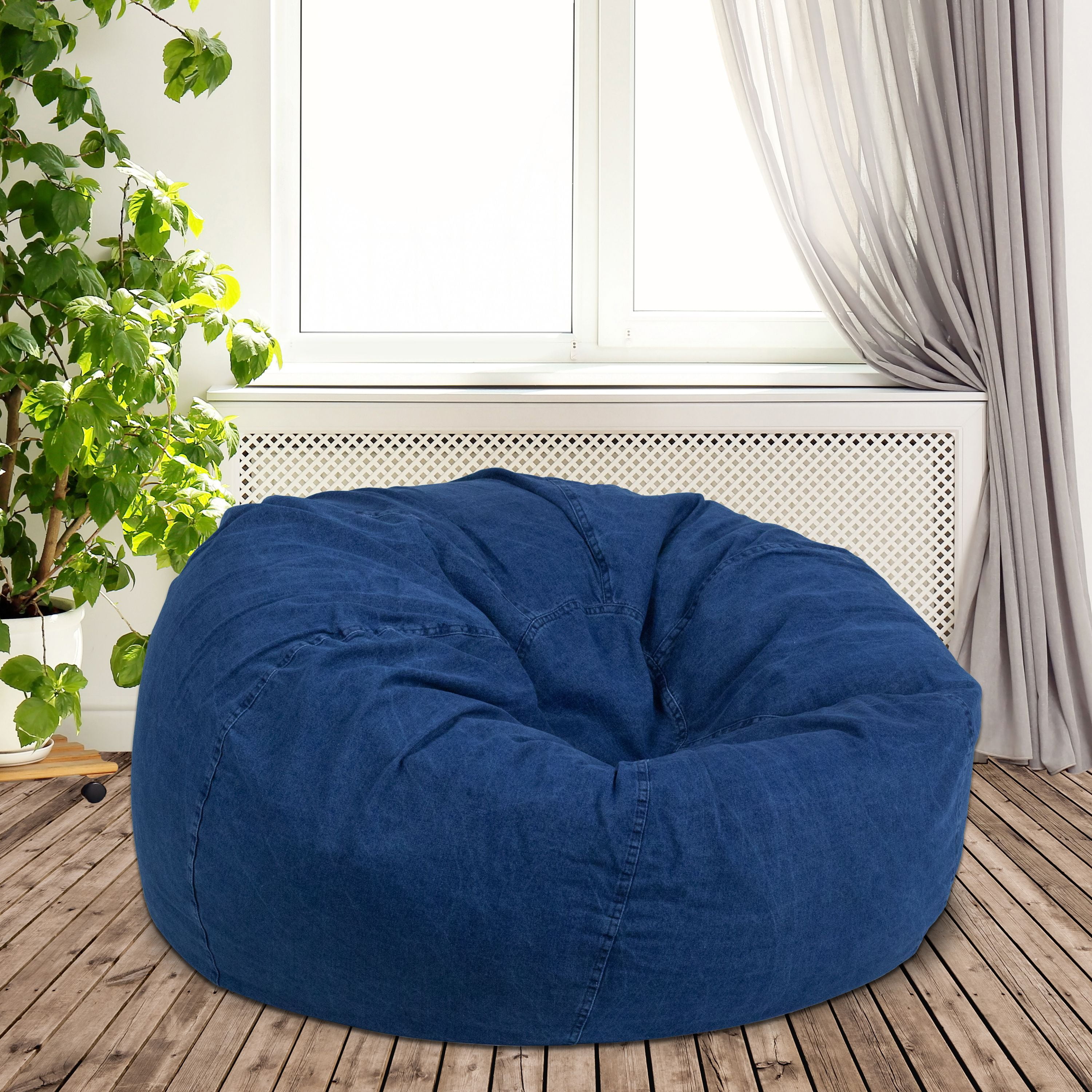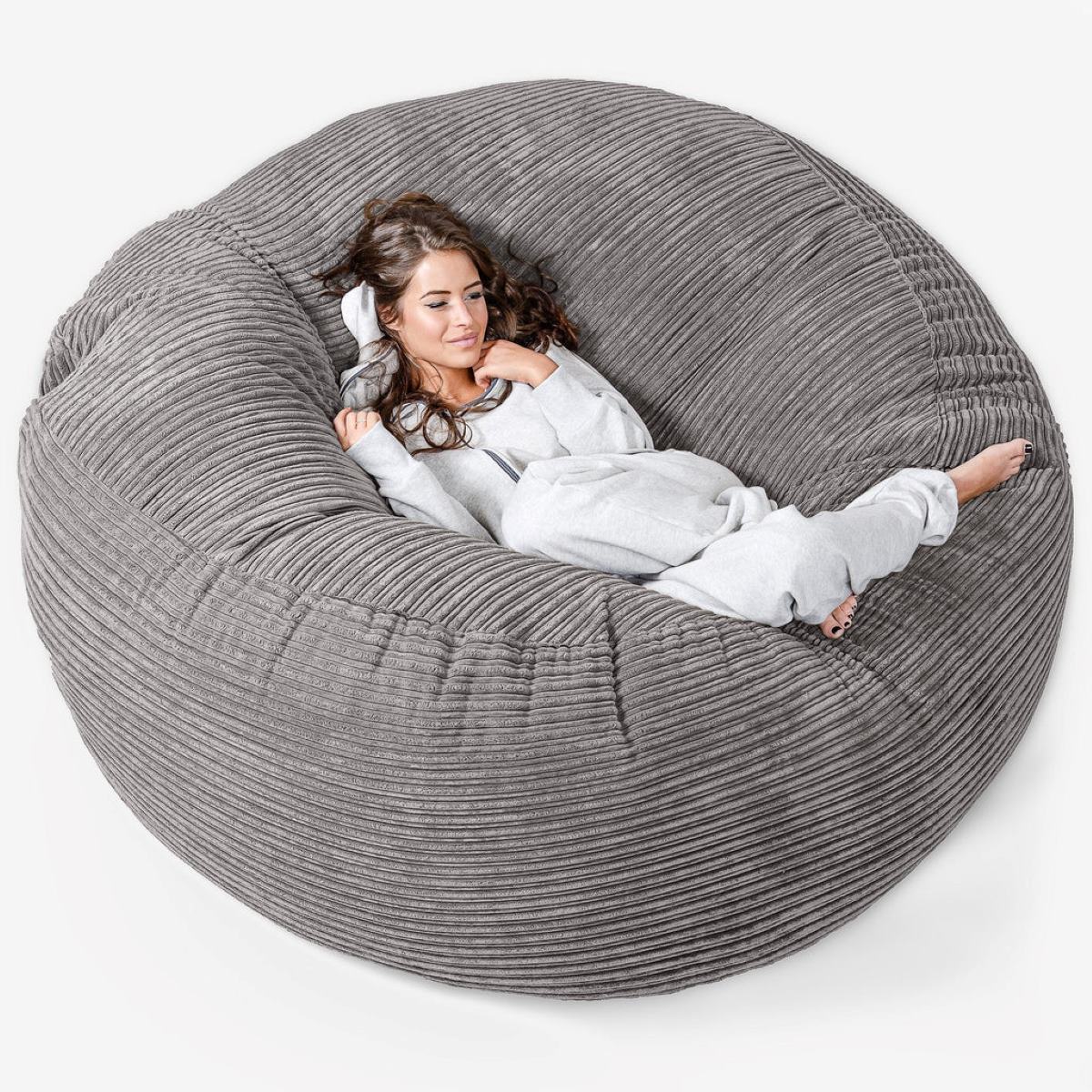The Bean Bag Chair
:max_bytes(150000):strip_icc()/52457315-5b6b2ea7c9e77c0082b2fbb7.jpeg)
The bean bag chair, a seemingly simple piece of furniture, has a rich and fascinating history, evolving from humble beginnings to a versatile and beloved staple in homes and offices around the world. Its journey reflects changing trends in design, materials, and cultural preferences.
The Genesis of the Bean Bag Chair
The origins of the bean bag chair can be traced back to the 1960s, a period marked by a surge in experimentation and innovation in design. The concept emerged from a desire for casual, comfortable seating that departed from traditional furniture styles. Early prototypes often involved filling fabric sacks with various materials like sand, beans, or even popcorn kernels. These early iterations were often homemade, reflecting the DIY spirit of the era.
Design and Functionality of the Bean Bag Chair

The bean bag chair, a seemingly simple yet ingenious invention, embodies a harmonious blend of comfort, adaptability, and design. Its unconventional form, reminiscent of a giant, plush pillow, belies the intricate principles of ergonomics and functionality that underpin its construction. This seemingly simple design has captivated generations, offering a unique and inviting alternative to traditional seating.
Ergonomic Principles and Comfort
The bean bag chair’s success lies in its ability to conform to the user’s body, providing unparalleled comfort and support. This is achieved through the strategic use of soft, malleable materials, such as foam beads or microbeads, that readily adapt to the user’s posture and weight distribution. The absence of rigid structures allows the chair to mold itself to the user’s contours, minimizing pressure points and promoting a sense of relaxation. The bean bag chair’s design effectively distributes weight across a larger surface area, reducing strain on the spine and joints. This feature is particularly beneficial for individuals who spend extended periods sitting, as it helps alleviate discomfort and fatigue.
Materials Used in Construction
The materials used in bean bag chair construction play a crucial role in determining its comfort, durability, and aesthetic appeal. A diverse range of materials are employed, each with its unique properties and advantages:
- Filling Materials: The most common filling materials for bean bag chairs include:
- Expanded Polystyrene Beads: Lightweight, inexpensive, and provide good support. They are also relatively durable, but can lose their shape over time.
- Micro-Beads: These smaller beads provide a softer, more conforming feel, making them ideal for lounging. They are also more durable than polystyrene beads, but can be more expensive.
- Foam Chips: Offer a firm, supportive feel, but can be less moldable than beads.
- Outer Fabric: The outer fabric of a bean bag chair is critical for its comfort, durability, and aesthetic appeal. Popular fabric choices include:
- Polyester: Durable, water-resistant, and available in a wide range of colors and patterns.
- Cotton: Soft, breathable, and comfortable, but can be more prone to wrinkles and stains.
- Leather: Durable, luxurious, and easy to clean.
- Microfiber: Soft, plush, and resistant to stains.
Types of Bean Bag Chairs
Bean bag chairs come in a variety of shapes, sizes, and styles, catering to diverse needs and preferences.
- Classic Bean Bag Chairs: These are the traditional bean bag chairs, typically shaped like a large, round pillow. They are ideal for lounging and relaxation, offering a comfortable and informal seating option.
- Bean Bag Loungers: These bean bag chairs are designed for extended periods of relaxation and lounging. They often feature a larger size and a more contoured shape, providing ample support for the back and legs.
- Bean Bag Sofas: These are larger bean bag chairs designed to accommodate multiple people. They offer a comfortable and flexible seating option for living rooms, bedrooms, or family areas.
- Bean Bag Ottomans: These smaller bean bag chairs are designed to be used as footrests or extra seating. They are often placed in front of a sofa or armchair, providing a comfortable and stylish addition to any room.
- Bean Bag Chairs for Children: These bean bag chairs are specifically designed for children, often featuring bright colors, fun patterns, and smaller sizes. They provide a safe and comfortable seating option for playrooms, bedrooms, or any area where children spend time.
Adaptability for Different Purposes
Bean bag chairs are incredibly versatile and can be adapted for a wide range of purposes:
- Seating: Bean bag chairs offer a comfortable and informal seating option for living rooms, bedrooms, or any area where relaxation is desired.
- Lounging: Their ability to conform to the user’s body makes them ideal for lounging, reading, watching TV, or simply relaxing.
- Sleeping: Some bean bag chairs are designed specifically for sleeping, offering a comfortable and supportive surface.
- Play: Bean bag chairs are popular among children for their soft, comfortable, and playful nature.
- Meditation: Their ability to provide support and comfort makes them suitable for meditation or relaxation practices.
The Bean Bag Chair in Popular Culture and Design: The Bean Ab Chair

The bean bag chair, a seemingly simple piece of furniture, has transcended its functional purpose to become a cultural icon, embodying the spirit of various eras and finding its place in popular culture. Its evolution is a testament to its adaptability and enduring appeal, reflecting shifts in design trends and societal attitudes.
The Bean Bag Chair’s Journey Through Popular Culture
The bean bag chair’s appearance in movies, television shows, and music videos reflects its cultural significance and evolving perception. Its presence in these mediums serves as a visual marker of time, capturing the essence of different eras and lifestyles.
- 1960s: The bean bag chair’s early appearances coincided with the rise of counterculture and the embrace of unconventional design. Its presence in films like “The Graduate” (1967) and “Easy Rider” (1969) symbolized a youthful rebellion against traditional norms, representing a comfortable and casual approach to living.
- 1970s: The bean bag chair continued to be associated with a bohemian and relaxed lifestyle, featuring prominently in sitcoms like “Happy Days” (1974-1984) and “M*A*S*H” (1972-1983). It became a staple in college dorms and family rooms, embodying the laid-back atmosphere of the decade.
- 1980s: The bean bag chair experienced a resurgence in popularity, appearing in films like “The Breakfast Club” (1985) and “Ferris Bueller’s Day Off” (1986). It was often associated with teenage rebellion and a desire for comfort and individuality, reflecting the growing emphasis on self-expression.
- 1990s: The bean bag chair’s association with youth culture continued, appearing in popular sitcoms like “Friends” (1994-2004) and “Seinfeld” (1989-1998). It became a symbol of casual comfort and laid-back living, reflecting the shift towards a more relaxed and informal lifestyle.
- 2000s-Present: The bean bag chair has undergone a transformation, with modern designs incorporating sleek aesthetics and innovative materials. Its appearance in films like “The Social Network” (2010) and “The Wolf of Wall Street” (2013) reflects its versatility and adaptability, transcending its previous association with youth culture.
The Cultural Significance of the Bean Bag Chair
The bean bag chair’s cultural significance lies in its ability to evoke specific emotions and associations, reflecting the spirit of the times and the values of different generations.
“The bean bag chair has become a cultural touchstone, a symbol of comfort, informality, and a sense of freedom.” – Design historian, Dr. Emily Carter.
- Counterculture and Rebellion: The bean bag chair’s early association with the counterculture movement of the 1960s represented a rejection of traditional furniture and a desire for comfort and individuality.
- Youth Culture and Relaxation: In the 1970s and 1980s, the bean bag chair became a staple of youth culture, symbolizing a laid-back lifestyle and a desire for comfort and relaxation.
- Casual Comfort and Modernity: In recent years, the bean bag chair has undergone a transformation, with modern designs incorporating sleek aesthetics and innovative materials. Its presence in contemporary settings reflects its versatility and adaptability, appealing to a broader range of tastes and lifestyles.
Designers and Brands, The bean ab chair
Several designers and brands have played a significant role in shaping the evolution of the bean bag chair, introducing innovative designs and materials that have expanded its appeal and functionality.
- The Bean Bag Company (1969): Founded by W.E. “Bill” Hammitt, The Bean Bag Company is credited with popularizing the bean bag chair in the United States, introducing the iconic “Sac” chair and establishing the bean bag chair as a cultural phenomenon.
- Zanotta (1954): This Italian furniture company introduced the “Sacco” bean bag chair in 1968, designed by Piero Gatti, Cesare Paolini, and Franco Teodoro. The “Sacco” became a design classic, known for its organic shape and innovative use of polyurethane foam.
- Fatboy (1998): This Dutch company revolutionized the bean bag chair with its oversized “Original” bean bag chair, introducing a new level of comfort and functionality. Fatboy’s bean bag chairs are known for their bold colors and contemporary designs, appealing to a modern audience.
The Bean Bag Chair in Art and Design
The bean bag chair’s unique form and cultural significance have inspired artists, photographers, and graphic designers, becoming a recurring motif in their work.
- Photography: Photographers have captured the bean bag chair’s versatility and adaptability, showcasing its ability to blend into different settings and evoke a sense of comfort and relaxation. Images of bean bag chairs in living rooms, bedrooms, and outdoor spaces reflect its enduring appeal and its ability to create a sense of home.
- Graphic Design: Graphic designers have incorporated the bean bag chair’s iconic shape into logos, illustrations, and advertisements, reflecting its cultural significance and its association with comfort, relaxation, and individuality.
- Art: Artists have used the bean bag chair as a subject in their work, exploring its form, texture, and cultural significance. Sculptures, paintings, and installations featuring bean bag chairs offer unique perspectives on this seemingly simple piece of furniture, highlighting its ability to inspire creativity and provoke thought.
The bean ab chair – The bean bag chair, with its comfortable and adaptable form, offers a unique seating experience. Much like a bean bag chair, the Rio Gear beach chair also provides a comfortable seating solution, but with the added benefit of portability.
If you’re looking to fold it up easily after a day of relaxation on the beach, you can learn how to fold a Rio Gear beach chair here: rio gear beach chair how to fold. Just like the bean bag chair, the Rio Gear beach chair allows you to unwind and enjoy your surroundings in comfort.
The bean bag chair, with its unique shape and comfortable cushioning, has become a popular choice for relaxation. While it offers a cozy experience, those seeking a more structured and supportive seating option might consider an ostrich beach chair pink.
This type of chair provides a firm back and armrests, offering a more upright and ergonomic seating position. Ultimately, the best choice depends on personal preferences and the intended use of the chair.
